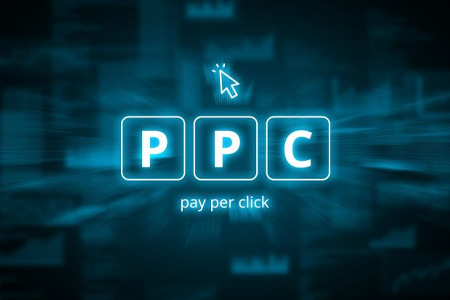Pay-Per-Click (PPC) advertising is a powerful marketing tool that allows businesses to reach their target audience quickly and effectively. However, with great power comes great responsibility—specifically, the responsibility to ensure that your advertising investment yields positive returns. Calculating your PPC Return on Investment (ROI) is essential to understanding the effectiveness of your campaigns. In this blog post, we’ll break down how to calculate PPC ROI, the key metrics to consider, and tips for optimizing your campaigns for better returns.

Table of Contents
ToggleWhat is PPC ROI?
PPC ROI is a metric that helps you measure the profitability of your PPC advertising campaigns. It shows how much revenue you earn for every dollar spent on PPC advertising. A positive ROI indicates that your campaigns are successful and generating profit, while a negative ROI suggests that adjustments are necessary.
How to Calculate PPC ROI
The basic formula for calculating PPC ROI is:
ROI=(Net ProfitTotal PPC Costs)×100\text{ROI} = \left( \frac{\text{Net Profit}}{\text{Total PPC Costs}} \right) \times 100ROI=(Total PPC CostsNet Profit)×100Where:
- Net Profit is the total revenue generated from your PPC campaigns minus the total costs associated with those campaigns.
- Total PPC Costs includes all expenses related to your PPC advertising, such as ad spend, management fees, and any other related costs.
Step-by-Step Calculation
- Determine Total Revenue from PPC Campaigns
To calculate ROI, start by identifying the total revenue generated from your PPC ads. This figure can be obtained from your analytics platform or the conversion tracking feature in your PPC account. For example, if your PPC campaigns generated $10,000 in sales, this will be your total revenue. - Calculate Total PPC Costs
Next, sum up all the costs associated with your PPC campaigns. This includes:- Ad Spend: The total amount spent on your ads.
- Management Fees: If you are using an agency or software to manage your campaigns, include those costs.
- Other Expenses: Any additional costs related to the campaign, such as landing page design or optimization.
For example, if your total ad spend was $4,000 and your management fees were $500, your total PPC costs would be $4,500.
- Calculate Net Profit
Subtract the total PPC costs from the total revenue to get your net profit.Net Profit=Total Revenue−Total PPC Costs\text{Net Profit} = \text{Total Revenue} – \text{Total PPC Costs}Net Profit=Total Revenue−Total PPC CostsContinuing with our example:Net Profit=10,000−4,500=5,500\text{Net Profit} = 10,000 – 4,500 = 5,500Net Profit=10,000−4,500=5,500
- Plug Values into the ROI Formula
Now, use the ROI formula:ROI=(5,5004,500)×100≈122.22%\text{ROI} = \left( \frac{5,500}{4,500} \right) \times 100 \approx 122.22\%ROI=(4,5005,500)×100≈122.22%This means for every dollar spent on PPC, you earned approximately $1.22 in profit.
Key Metrics to Consider
While calculating ROI is essential, understanding the following metrics can provide additional insights into your PPC performance:
- Conversion Rate: The percentage of users who complete a desired action (e.g., making a purchase) after clicking on your ad. A higher conversion rate often leads to a better ROI.
- Cost per Acquisition (CPA): The average cost of acquiring a customer through PPC campaigns. Lowering your CPA can significantly improve your ROI.
- Click-Through Rate (CTR): The percentage of people who click on your ad after seeing it. A high CTR indicates that your ad is compelling and relevant to your audience.
- Quality Score: Google assigns a Quality Score to your keywords based on their relevance and performance. A higher Quality Score can lead to lower costs per click and improved ad placements, ultimately enhancing ROI.
Tips for Optimizing PPC ROI
- Use Negative Keywords: Implementing negative keywords helps you filter out irrelevant traffic, ensuring that your ads only appear for relevant searches, leading to better conversion rates.
- Test Different Ad Variations: Regularly A/B test your ad copy, visuals, and calls to action. Testing different versions helps you determine which elements resonate best with your audience, improving your CTR and conversion rates.
- Optimize Landing Pages: Ensure that your landing pages are optimized for conversions. A well-designed landing page can significantly impact your conversion rate and, consequently, your ROI.
- Monitor Performance Regularly: Regularly review your PPC campaign performance to identify trends, high-performing keywords, and areas that need improvement. Make data-driven decisions to optimize your campaigns.
- Adjust Bids Strategically: Analyze the performance of your keywords and adjust bids based on their profitability. Increasing bids on high-performing keywords can lead to better placements and higher ROI.
Conclusion
Calculating PPC ROI is a fundamental practice for any business investing in online advertising. By understanding your return on investment, you can make informed decisions about your PPC strategies and optimize your campaigns for better results. Remember, a positive ROI is not just a number—it reflects the effectiveness of your advertising efforts and can guide your future marketing initiatives. By implementing the tips mentioned above, you’ll be well on your way to maximizing your PPC ROI and achieving your business goals.


No responses yet